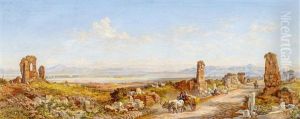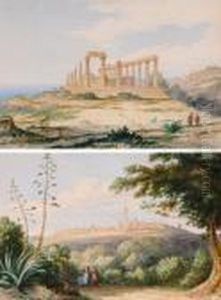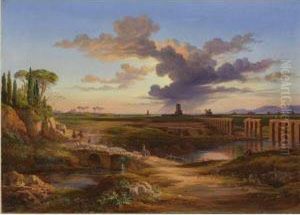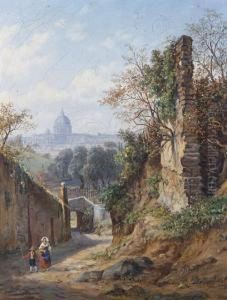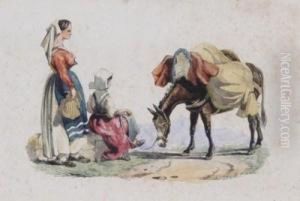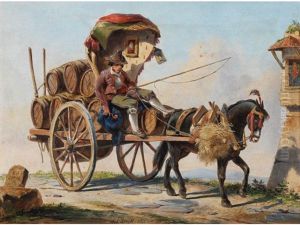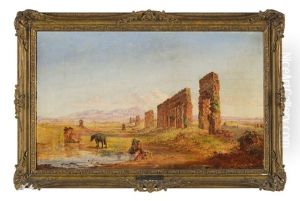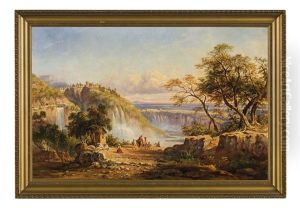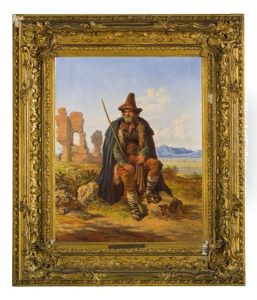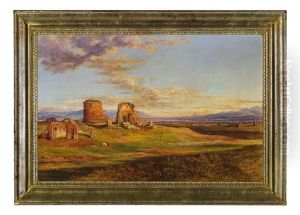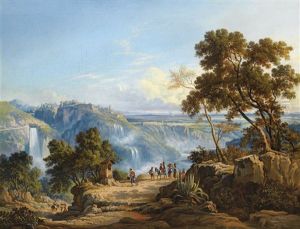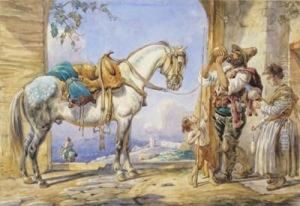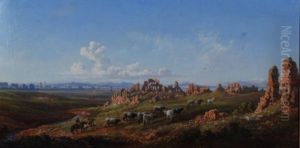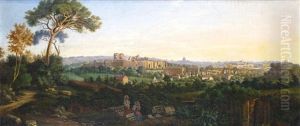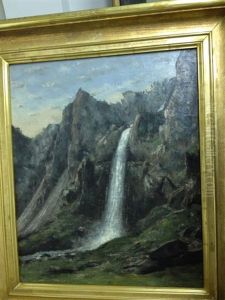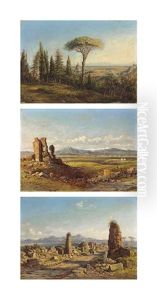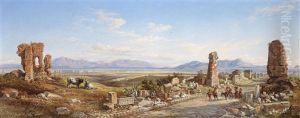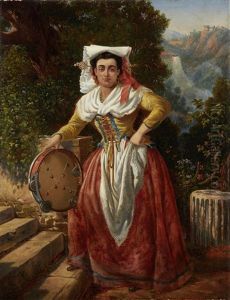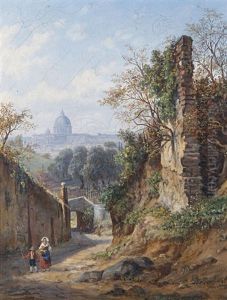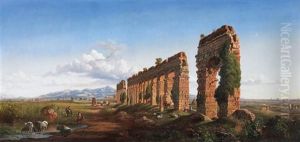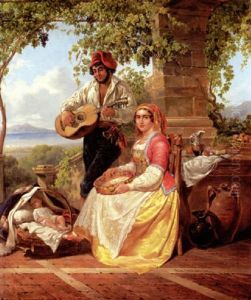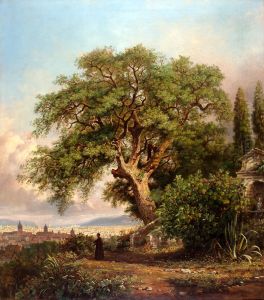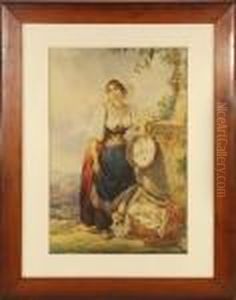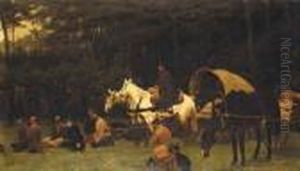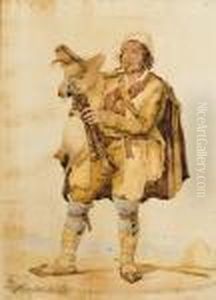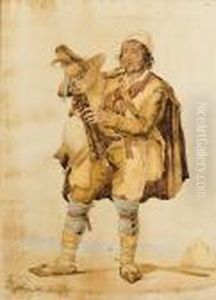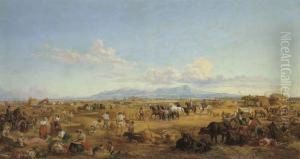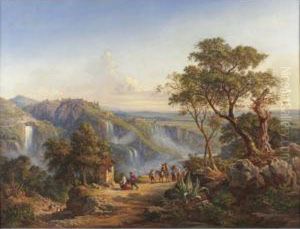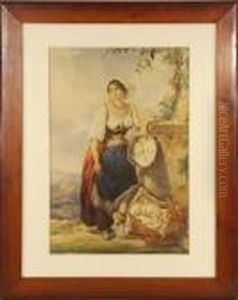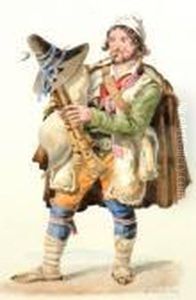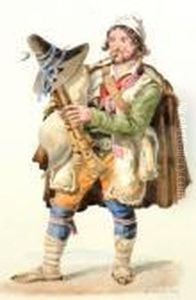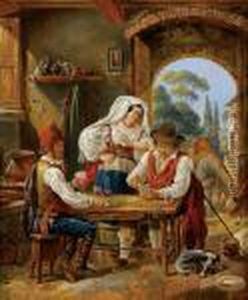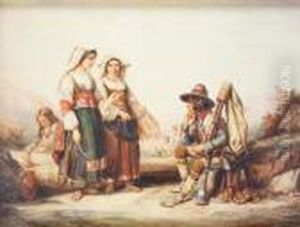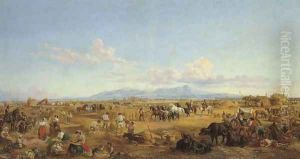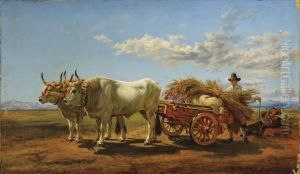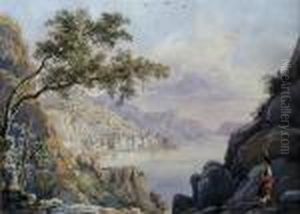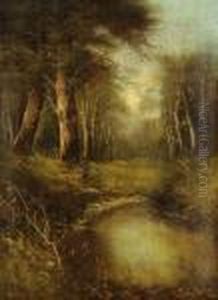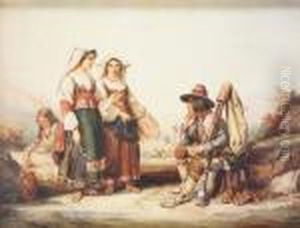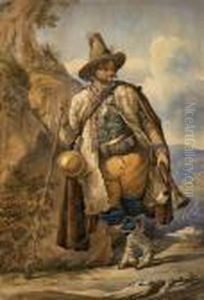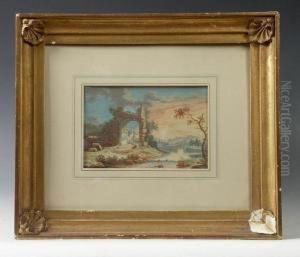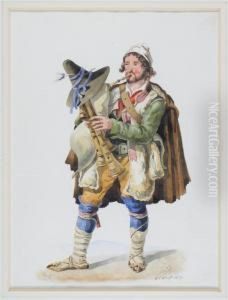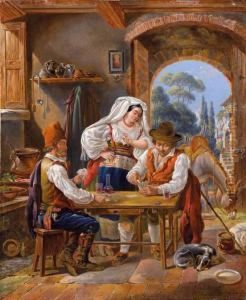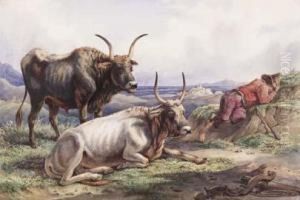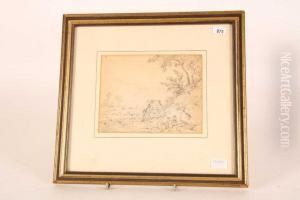Arthur John Strutt Paintings
Arthur John Strutt was an English artist, traveler, and author born in 1819 in Chelmsford, Essex, England. Coming from a family with artistic ties—his father, Jacob George Strutt, was a noted landscape painter—Arthur Strutt developed a strong inclination towards the arts from an early age. He was also influenced by his uncle, Joseph Strutt, who was an engraver, artist, and writer. These familial connections provided a nurturing environment for his artistic talents to flourish.
Arthur John Strutt was primarily known for his landscape paintings, which were characterized by their detailed and picturesque representation of nature. His work often depicted the countryside, aligning with the Romantic era's emphasis on the beauty of the natural world and its emotional impact. Strutt's travels across Europe, particularly Italy, greatly influenced his work. His experiences abroad not only inspired his paintings but also led to his career as a travel writer. His writings provided vivid descriptions of the landscapes and customs he encountered, and they were well-received by the Victorian audience who had a keen interest in travel and exploration.
Strutt's artistic output included etchings and illustrations, which also gained recognition. His works were exhibited at institutions such as the Royal Academy and the British Institution, reflecting his status within the artistic community of the time. Despite the fame and appreciation he garnered during his lifetime, Arthur John Strutt's work is not widely known today, and he remains a relatively obscure figure in the annals of 19th-century British art.
Arthur John Strutt continued to paint and write throughout his life, contributing to the rich tapestry of Victorian art and literature. He passed away in 1888, leaving behind a legacy that, although not largely celebrated in contemporary times, represents an important part of the cultural and artistic history of the period.
